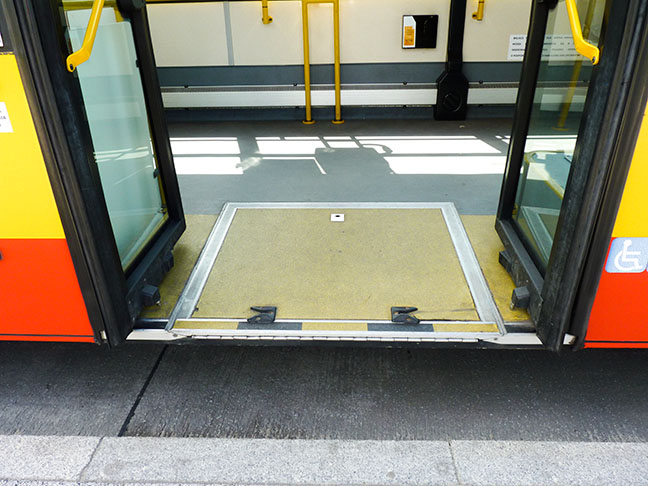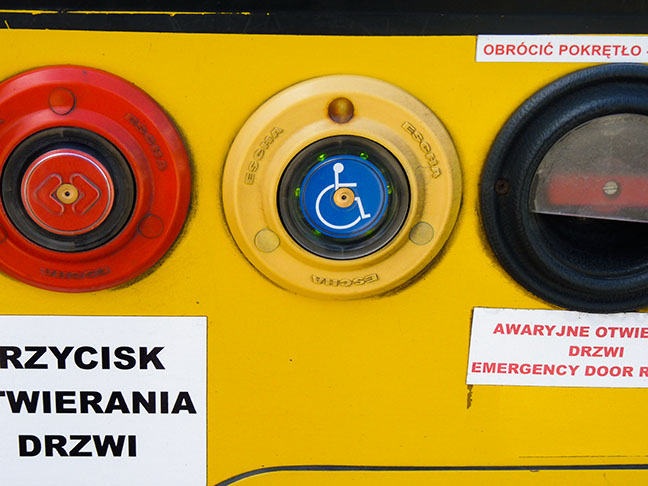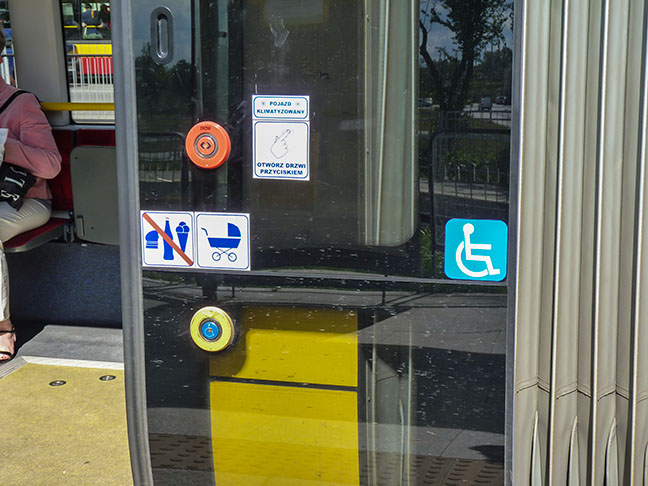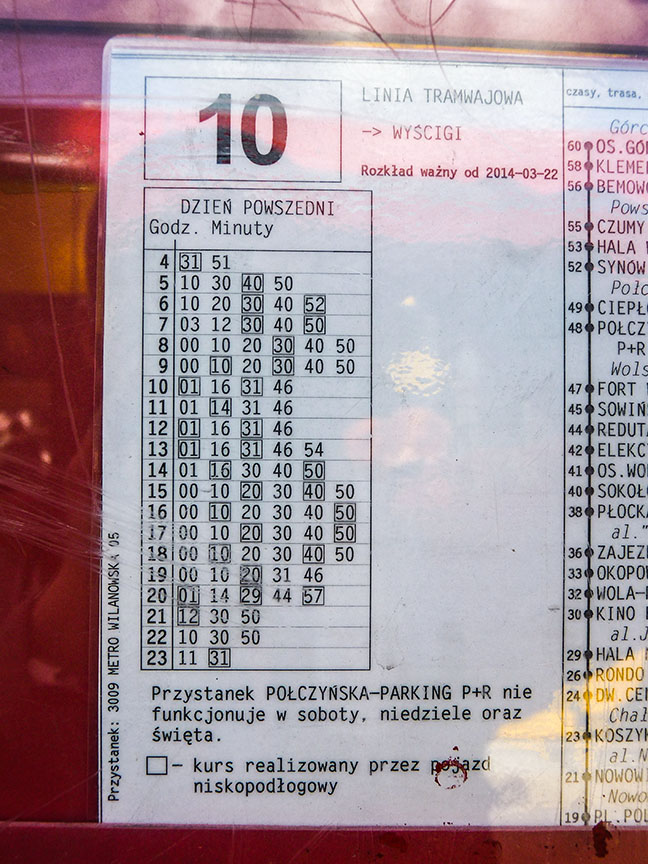The Warsaw Municipality is working on improving accessibility throughout all of the public transport network. However, the only method of public transit which is completely accessible currently is the bus network. The Public Transport Authority allows disabled persons to ride for free as long as they are able to show documentation proving their disability.
On the 1st of January 2014, the last high-floor bus was removed out of regular service. All buses in service are equipped with kneeling capabilities, which reduce the height gap between the curb and the bus. Also, all buses are equipped with spaces for wheelchairs and ramps. The ramp is always at the second door. Some of the buses are equipped with a button labeled with the international symbol for accessibility near the second door which informs the driver of your intention to board the bus, so that he will come and lower the ramp for you. On others, you may have to approach the driver and signal to him that you would like to board so that he will lower the ramp. The ramp is always lowered manually.
 Ramp in a bus.
Ramp in a bus.  Accessibility button.
Accessibility button.
The Public Transport Authority claims that the Metro system is completely accessible, as all of the carriages are low floor and there are lifts at every station to allow access to the platform. However, the gap between the platform and carriage may be too large for some wheelchairs and mobility aids. To solve this, the 7 new Siemens Inspiro trains in service on the first metro line are equipped with a bridging plate that extends to the platform, providing those vehicles gap-free access to the carriage.
The majority of the trams in the city are not low-floor. But still there are a few models of trams which have at least a section which is low-floor and are equipped with facilities for wheelchairs and mobility aids. Many of the high-floor trams are equipped with priority seats near the front set of doors for people with walking difficulties. On the newer low-floor trams, the ramp for wheelchairs and mobility aids is automatic, which means that all you need to do is press the button labeled with the international accessibility symbol and the ramp will lower itself. On some trams, the doors may have to close first, but they will open again if the button is lit red. On some trams, the ramp is located at the second door like at buses. On others, it will be found at the low-floor section of the tram. A problem with some tram stops is that some are accessible only from underground. Unfortunately, they are usually not equipped with lifts and thus are inaccessible.
 A tram door equipped with an automatic ramp activated by the button with the international accessibility symbol.
A tram door equipped with an automatic ramp activated by the button with the international accessibility symbol.
Timetables for trams indicate whether the service will be operated by a low-floor tram. Also, jakdojade.pl has an option to route using solely low-floor vehicles, so that you will not encounter a situation where the vehicle that will arrive will not be accessible.
 The squares that surround specific minutes indicate that a low-floor tram will be servicing that journey.
The squares that surround specific minutes indicate that a low-floor tram will be servicing that journey.
All commuter rail trains have a section for wheelchairs and a ramp, however not all stations are accessible. Some train stations have underground crossings to the platforms which are not equipped with lifts. Others are accessible from street level.
Many public transport vehicles are equipped with displays informing the next stop and with voice announcements. Furthermore, most vehicles are equipped with distinctively colored handlebars and seats to accommodate for those with sight impairments.


